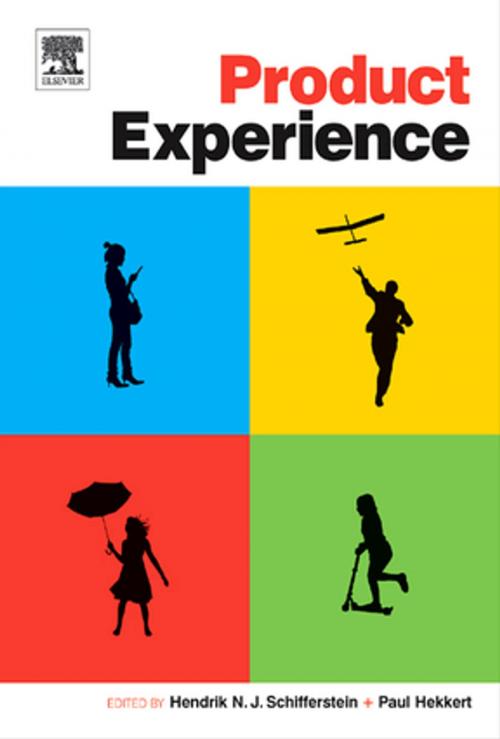Product Experience
Nonfiction, Health & Well Being, Psychology, Applied Psychology, Social Psychology| Author: | ISBN: | 9780080556789 | |
| Publisher: | Elsevier Science | Publication: | April 28, 2011 |
| Imprint: | Elsevier Science | Language: | English |
| Author: | |
| ISBN: | 9780080556789 |
| Publisher: | Elsevier Science |
| Publication: | April 28, 2011 |
| Imprint: | Elsevier Science |
| Language: | English |
Product Experience brings together research that investigates how people experience products: durable, non-durable, or virtual. In contrast to other books, the present book takes a very broad, possibly all-inclusive perspective, on how people experience products. It thereby bridges gaps between several areas within psychology (e.g. perception, cognition, emotion) and links these areas to more applied areas of science, such as product design, human-computer interaction and marketing.
The field of product experience research will include some of the research from four areas: Arts, Ergonomics, Technology, and Marketing. Traditionally, each of these four fields seems to have a natural emphasis on the human (ergonomics and marketing), the product (technology) or the experience (arts). However, to fully understand human product experience, we need to use different approaches and we need to build bridges between these various fields of expertise.
- Most comprehensive collection of psychological research behind product design and usability
- Consistenly addresses the 3 components of human-product experience: the human, the product, and the experience
- International contributions from experts in the field
Product Experience brings together research that investigates how people experience products: durable, non-durable, or virtual. In contrast to other books, the present book takes a very broad, possibly all-inclusive perspective, on how people experience products. It thereby bridges gaps between several areas within psychology (e.g. perception, cognition, emotion) and links these areas to more applied areas of science, such as product design, human-computer interaction and marketing.
The field of product experience research will include some of the research from four areas: Arts, Ergonomics, Technology, and Marketing. Traditionally, each of these four fields seems to have a natural emphasis on the human (ergonomics and marketing), the product (technology) or the experience (arts). However, to fully understand human product experience, we need to use different approaches and we need to build bridges between these various fields of expertise.
- Most comprehensive collection of psychological research behind product design and usability
- Consistenly addresses the 3 components of human-product experience: the human, the product, and the experience
- International contributions from experts in the field















